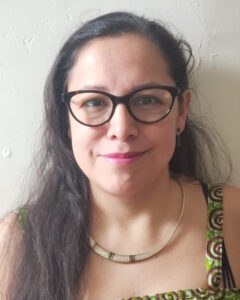*
I love Africa. I do not remember when our relationship was born. I grew up watching documentaries and reading encyclopedias. I viewed images of famine, Mandela free, and I was transported and dreamed, thanks to the magic of landscapes, colors, music, and chants. My native Mexico has some people with African origins, but we do not talk about it a lot. I was so happy to meet and learn more from the African people after my arrival in Paris. Sad colonialism and immigration narratives. Beautiful cultures, smiles, and sharing. Over the years, I have discovered how our countries have more resemblances than people imagine. The indigenous people share ancestral traditions about life, art, and music.
I was so happy to live in Burkina Faso, a little country in West Africa, in 2008, a few months after obtaining my master’s degree. My visit was thanks to one of my professors who loved and worked for Africa. My classmate and friend Sarah and I, in our internship about urban projects, stayed only three months in a popular neighborhood. Besides our job, we shared amazing moments with our neighbors, who taught us the basic rules for living as local people as much as possible, with our different skin color. We were “nassara” (white), although some people thought I was Chinese. Many memories of this time remain; we wrote some of them on a blog that is still somewhere in cyberspace. Some memories about chicken traveled to New York. In Burkina they call their chicken “bicycle chicken.” Some people say it is because the chickens run like bikers; others say it is because they are sold alive, et oui, it is true. Our neighbor proposed to cook for us, and we went to the market to buy chicken. The trader showed us living chickens and asked us to choose them. It seemed weird; however, we ate Burkinabe chicken many times because it is delicious. It was a beautiful trip. About food, through the years, I find Mexican and African people share recipes, like maffe (peanut butter sauce—this is another story). Moreover, people like to eat fowl like Guinea fowl, also delicious, which in Western Africa you can eat with attiéké (fermented cassava pulp), a kind of couscous, onion, and tomato sauce.
Several years later, I came to New York. When I arrived, I was looking for African references, and discovered Le Petit Senegal (Little Senegal) in West Harlem. Malcolm Shabazz Market is a colorful place with fabulous clothes and amazing artisanal products. Around here are stores, restaurants, associations, and beauty centers that look like those in West African cities. Most of the people are from francophone West Africa: Senegal, Mali, Burkina Faso, and Guinea. People arrived here in the 1970s—like almost all migrants in New York City, to find a better life. They became famous for being good traders. However, after the prices rose in the neighborhood, many of them left. More or less 5,000 live there; they were more than 12,000 in the past. Although some of them left, Africa is still in a mix with New York culture. You can feel it and listen to French on the streets. I went to the market one or two times to speak French with the traders and buy fabrics and clothes. Most of them are women, and they were surprised to hear me speak French. And for sure, I looked for good food.
I discovered a good restaurant, La Savane. My best experience was with Jorge, Vero, and Mateo, Mexican friends, curious about world cultures. One Saturday night, besides the picturesque ambiance, we observed women with beautiful boubous (traditional colorful garments) in one party before arriving at the restaurant. We traveled, thanks to the tastes, smells, conversation, and the programs on the television in the restaurant. I spoke about my Burkinabe chicken, and we decided to order Guinea fowl. They served it with attiéké, plantain, onion, and spicy sauce. We ate with our hands, as many people do in Africa, and in the restaurant. It is one symbol of sharing and friendship. We shared a trip to Africa, thanks to New York. When I finished this writing, I learned that my first African nephew was born. My heart sister, Niouma, of Senegalese origin, gave birth to beautiful Djidou, one more reason to love Africa.
*
*
 An essay by Jackie Leduc on the burning of Notre Dame Cathedral was published in LR18. Born and raised in Mexico, she lived for 14 years in Paris, working as an urban planner of affordable housing. For Remember, a book by students in the University Settlement advanced writing class, she wrote the introduction and an essay on participating in the Black Lives Matter demonstration.
An essay by Jackie Leduc on the burning of Notre Dame Cathedral was published in LR18. Born and raised in Mexico, she lived for 14 years in Paris, working as an urban planner of affordable housing. For Remember, a book by students in the University Settlement advanced writing class, she wrote the introduction and an essay on participating in the Black Lives Matter demonstration.